BLOG:
There is an old sailor tale that tells of a large ship one day caught in the middle of the Ocean. A large wave came over the side and knocked their anchor down into the depths of the ocean. No matter how much the sailors heaved and pulled they could not seem to pull up the anchor, and feared that if they pulled to hard they would make a hole in the bottom of the ocean, and drain out all the water. A brave sailor dove off the bow of the ship with knife in hand, ready to face whatever lay at the bottom of the sea. After a few tense minutes the sailor burst to the surface of the ocean and told the others that he had freed the anchor, and the ship was free to sail. After they had pulled him up onto the deck they asked him how he had freed the anchor. The sailor told them that a giant octopus had grabbed onto their anchor and was playing with it, but he had tied its legs into bowline knots, so it would never bother them again.
Although we didn’t encounter giant octopi on the Gato Verde (http://www.gatoverde.com/), I think this story reviles subtle truths about life out at Sea. First of all as a crew you have to be ready for anything whether it be a sea creature, or just the logistics of where to dock at night. Learning to be ready for anything at anytime takes a while to get use to, but like everything else we learned while on the Gato it seems to apply not only to sailing and science, to life.
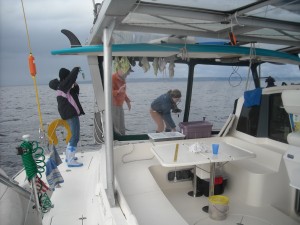
More Sailing!
One of the most important lessons I took away from the Gato was an understanding of what it takes to live sustainably. It is all too common to go through life unaware of the impact you are making, and the resources you are using. I feel that before my time on the Gato I was somewhat aware of my impact, and attempted to live sustainably, but I did not fully recognize the effect of everything I did. On the Gato we took measurements of the fresh water, sewage, and bio- diesel used. These are things that are easy to take for granted in every day life, but when living on a boat you start to realize just how much water you use, and sewage you produce. We had a water tank that held all our fresh water for dishes, drinking, and cooking with. Our water holding tank was on the port side of the Gato over the left hull. The water level was measured in cm and converted to liters and gallons. It was interesting to see how much water we used everyday. We still used a lot of water per person everyday, so it hard to imagine how much water we use daily when taking showers. The sewage tank was on the starboard side of the Gato near the bow. The sewage system was connected to the heads (bathrooms), which were on both the port and starboard side of the boat. Before the Gato I had not idea of how much sewage 8 people can produce, let alone a city, and how difficult sewage can be to deal with. Captain Todd explained the different types of holding tanks a boat can have, and the different ways to treat them. He had a type 3 system, which was an anaerobic system. He introduced a certain species of bacteria into his system that out competed the bacteria that make sewage smell. It was amazing to think that we had a tiny ecosystem on board the Gato with us. Who knew poop could be so fascinating!
In order to conserve bio-diesel we attempted to sail when the wind allowed. Although we didn’t get many opportunities to sail, it was a fun time when we did. Captain Todd taught us about the different points of sail: close-hauled, beam-reach, broad reach, running, and irons (no go zone). We got to steer the boat on our first cruse tacking down the Strait of Georgia. We learned how to sail right against the irons, without going into irons (60-50*) an ideal angle for sailing. We learned about how to let out the jib and main sail, and how to properly put both away.
As a class we also had to figure out our daily navigation. To do this we had to take a lot into consideration: the weather, sea state, tides, where the whales were, and where we would spend the night. At first this seemed to be a logistic nightmare, but after we created a routine for the navigator it became relatively easy. The hard part of navigating occurred when we had to make important decisions during the day, like if we were going to try and catch the whales.
Boat life is difficult, but extremely rewarding at the same time. Looking back my best memories of the boat involve sitting on the trampoline and just appreciating the sea that surrounded us.
Read More
Today is the last day of Beam Reach, and I don’t know how it went by so quickly. I came into this course ten weeks ago unaware of the amazing people I would meet, how much I would learn, and grow (unfortunately not height wise). So much has happened in ten weeks it’s difficult to sit down and distill it into words, but I will try. As class we were an unusual fit, we came in from completely different backgrounds, with different interests, from all over the world, but despite these differences we became inseparable.
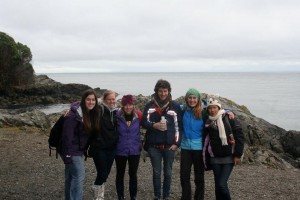 03 Skinny Love
03 Skinny Love
As time went on, and the class presented more challenges we never forgot to save time to laugh, and talk to one another. During stressful nights we would have the occasional dance party to help us get through our work in good spirits, but we also never forgot that we were at the labs to study whales.
The first time we encountered whales Robin, our lead professor, came running through the door of s1 out of breath to tell us their were whales in San Juan Channel. We dropped everything and ran as fast as we could down to the point to watch the whales. For many of us it was our first time seeing Orcas. It is an amazing feeling the first time you see a dark black fin slowly rising up out of the water. Its as if the whole world is centered on the magnificence and beauty of this one amazing animal. As the transients silently swam by it became clear to me at that moment why the work we did in this course mattered.
Since that first encounter with the whales I have never forgotten why I am here. I am sad that the course is coming to an end, but could not have asked for a better group of peers to spend the past 10 weeks with. They have inspired me to laugh, love, and learn everyday, and for that I am grateful.
Read More
The Friday Harbor Labs have a number of trails to explore, that weave and wind through the woods behind the labs. Rachel, Taya, and I decided to go explore some these trails one afternoon. As we were walking down muddy trail we spied a small tunnel that appeared to lead through a thicket. After bushwhacking through the gnarled tunnel, which had more thorns than we had anticipated, we emerged onto a breathtakingly beautiful meadow that overlooked the ocean. This was no ordinary meadow, it was the kind of meadow that you go to on a sunny day to make daisy chains. The ground was covered in a thick layer of emerald green moss that gently hugged us as we sat on it. Below the blissful meadow lay a small beach covered in soft rounded pebbles that made a pleasant clacking sound as we walked over them. As the sun began to sink lower in the sky it started to dawn on us that we had to get back to the trail. We didn’t want to go through the tunnel because it was unpleasant enough the first time. We decided to head due west towards the trail. Our zigzagging path through the woods took us on an adventure full of thorns and laughter. Hopefully next time we go to our amazing spot in the woods we can find a better way to get there!
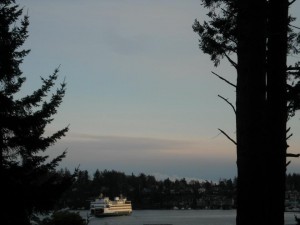
This past week in class we each read and discussed a paper on sustainable fisheries. I chose a case study that evaluated the environmental impact of different varieties of feeds used at salmon farms. The main goal of this study was to determine if organic salmon feed had less of an environmental impact than the conventional salmon feed. The study used four different types of salmon feed. The LCA methodology was used to evaluate the environmental impact of each feed. Each ingredient was assessed on its environmental impacts from cradle-to-grave. They found that the organic ingredients outperformed the conventional ingredients in every category except ecotoxicity. This article really helped me grasp just how big of an impact farmed fish have on the environment. A good way to further the study would be to test the health impacts of organic vs. conventional  feed on the salmon.
Link to Feeding Farmed Salmon: Is Organic Better?
http://www.fcrn.org.uk/sites/default/files/Feeding_farmed_salmon_-_is_organic_better.pdf
Read More
After a long week of work we were excited to finally get into town yesterday. We ate a quick lunch, and hopped into the rowboats for a short, and somewhat rambunctious boat ride into Friday Harbor. The Whale Museum was our first, and longest stop. For me the most fascinating part of the museum was the rich cultural connection between the Northwest Coast Native People and the orcas. This subject is of particular interest to me after working at Camp Nor’wester (http://norwester.org/) this past summer. Camp Nor’wester is lucky enough to be home to a native big house, and a Northwest coast Native education program, but until the Whale Museum I didn’t know the native stories of the orcas. After a fascinating hour and half at the museum we decided to mosey around town, and somehow stumbled upon the Sea Shepherd store. For those who don’t know Sea Shepard is an anti-whaling organization founded by Paul Watson. The show Whale Wars follows the organization’s campaigns down in the Southern Sea, where they fight the Japanese whaling fleet. Their methods of stopping the Japanese border on blurred line between eco-terrorism and radical activism, but they do seem to be effective. It just so happened that Peter Hammarstedt, captain of the Sea Shepherd Ship Bob Barker, was doing a meet and greet at the Sea Shepherd store! We got to meet him, and had a really interesting conversation about the role of science in environmental activism (apparently there not much room for it)! This discussion tied in extremely well to our readings and talks in class about sustainability science, and the role science plays in conservation work.
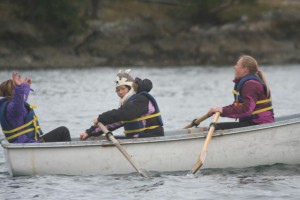
Last week the six of us each presented a case study on sustainability science, and discussed each paper in depth. I presented on a paper titled Rewilding and Biodiversity: Complementary Goals for Continental Conservation by Michael Soule and Reed Noss. This paper discusses the conservation method of rewilding, which aims at creating connectivity between isolated ecosystems. Rewilding is a fairly new technique used by conservation biologists to help preserve the key stone species, which typically are large carnivores, of isolated ecosystems. The concept of rewilding evolved from the theory of Island Biogeography, which was developed by Robert H. MacArthur and Edward O. Wilson in the late 1960s. Island Biogeography is he basic ecological concept that on any isolated environment (originally islands) the ecosystem has a maximum capacity of established species it can hold. The smaller the environment the less species it can sustain, and the higher the extinction rate. Because civilization has built up around many ecosystems, and essentially turned them into ecological “islands†the extinction rate has become much higher in these areas of isolation. Rewilding aims to reconnect these “islands†through wilderness corridors. These wilderness corridors are essentially highways of untouched land through which animals, namely large carnivores, can travel between.
Overall it has been an amazing first week, and I can’t wait to see what the future holds (hopefully whales!). I feel so fortunate to be in such a beautiful place, learning amazing things, with an incredible group of people!
Until next time,
Jamey
Read More
It is hard to imagine that there could possibly be a more beautiful environment to learn  in. Waking up every morning to the snowy peaks poking their heads over the emerald islands to greet me, and remind me why I am here. It’s so important that the irreplaceable and enchanting ecosystems that make up the San Juan Islands are preserved.
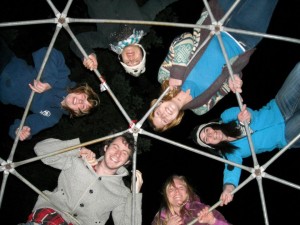
This first week we have talked extensively about what sustainability science means to us, and the different ways we can practice sustainability over the next nine weeks of our course. At home I try to live a sustainable life style, but I have never considered the different ways sustainability can be practiced when doing science. To me sustainability science is the practice of environmentally conscious science that aims at furthering our knowledge of effective ways humanity can live in balance with nature.
We have only been at the Friday Harbor Labs for a week, and although we have yet to see any orcas, there has been no lack of thing to do, and people to laugh with. After a week packed with learning we finally had a chance to go to the whale museum today! http://www.whalemuseum.org/ What an amazing resource to have right in our backyard!!
Read More








 Twitter
Twitter LinkedIn
LinkedIn Facebook
Facebook